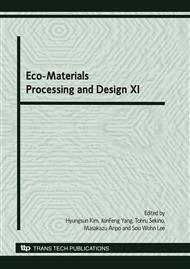p.161
p.165
p.169
p.173
p.177
p.181
p.185
p.189
p.193
The Theoretical Research of Constitutive Property, Reactivity and FTIR of Chitosan
Abstract:
The structural optimization and the frequency for chitosan monomer, chitobiose and chitotriose with the quantum chemistry abinitio HF and the density functional B3LYP method by choosing 6-311 + G (d, p) as the basis set were calculated and studied. For its three rotational isomers, gauche-trans (gt), gauche - gauche (gg), and trans-gauche (tg), the calculations comparatively were performed respectively. The charge distribution and frontier molecular orbit were analyzed by using the method of natural bond orbital (NBO). The calculated IR spectrum was compared with the experimental data. The results showed that the three rotational isomers gt, gg, and tg can stably existed in chitosan with the stability order gg﹥gt﹥tg. Its highest occupied molecular orbital (HOMO) was provided primarily by nitrogen atom and its lowest unoccupied molecular orbital (LUMO) was provided mainly by the oxygen atom; Its reaction active sites were concentrated in -NH2 and –OH. The calculated infrared spectra were in good agreement with the experimental values.
Info:
Periodical:
Pages:
177-180
Citation:
Online since:
July 2010
Authors:
Price:
Сopyright:
© 2010 Trans Tech Publications Ltd. All Rights Reserved
Share:
Citation:


